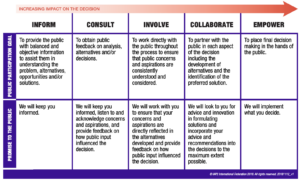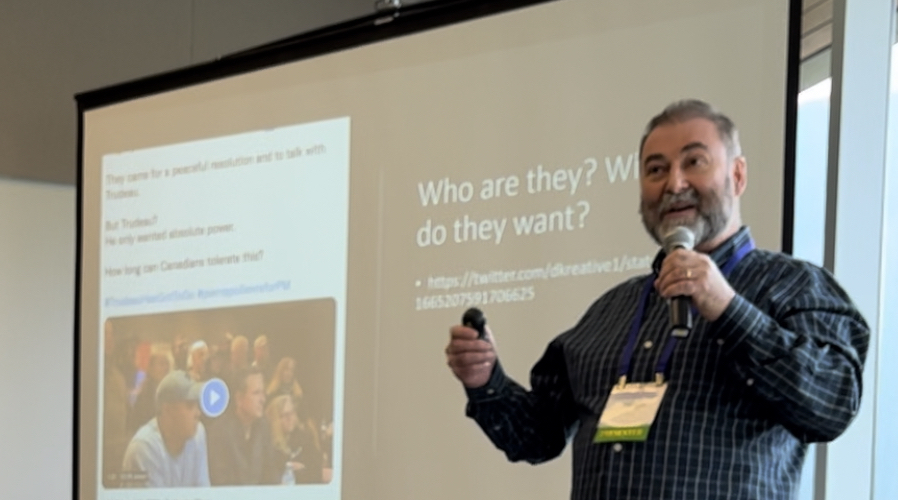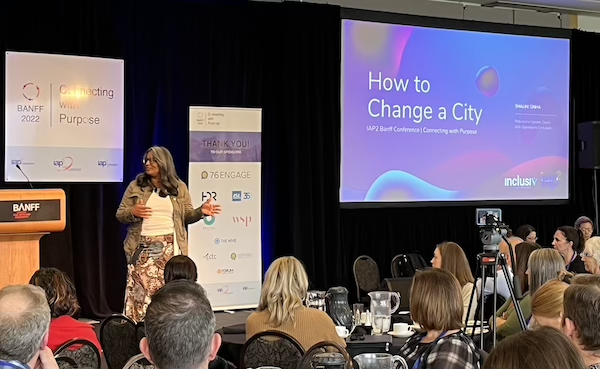Tag: Public Participation
76engage is the Lead Technology Sponsor for the Upcoming IAP2 North American Conference

We are proud to be taking part in the IAP2 North American conference for our fifth year in a row. As a leader in digital engagement and the lead technology sponsor, we will be hosting a breakout session. The session, titled P2 and AI: Promise and Peril, will engage participants in a discussion of the opportunities and the potential issues in using AI for P2. How can AI help with P2? What has it made possible? What are the early issues we are encountering? What strategies, tactics and best practices are we developing to contain the risks while maximizing the benefits of integrating AI into P2?
Along with our breakout session we will also have a booth at the conference. Come find us and say hello. We are eager to learn from, and network with, the top P2 professionals in the industry and come back with new and improved ideas to propel 76engage.
The conference will take place over two and half days in Seattle starting on September 13th. For more information about the conference visit the conference website.
Can’t make it to the conference? Follow the conversation on social media with #iap2nac
Public engagement in the “Post-Covid” world: Step One – Planning
Public Engagement in the Post-Covid World
For over two years, the COVID-19 pandemic affected almost every aspect of our personal and professional lives. For public/stakeholder engagement professionals, the practice of public engagement may have changed forever.
Prior to the COVID-19 pandemic, geographic, mobility and other ability constraints were already preventing groups of stakeholders from being able to access open houses, town hall meetings and other venues of in-person public engagement. Today, of the citizens who were able to attend in-person public engagement opportunities prior to the COVID-19 pandemic, it seems unlikely that all will feel comfortable gathering in crowded community centres or hotel function rooms in the shadow of the pandemic – particularly for citizens that have health risk factors or live with those that do. Moreover, years of global pandemic living have shifted our behaviours, schedules and physical locations. Physical gathering places in urban areas that may have been easily accessible to those working in corporate office buildings are unlikely to be as accessible for those same individuals who are now permanently working from home.
Accordingly, digital public engagement is a crucial tool in the post-COVID public engagement toolkit that will ensure that a planned consultation will reach all targeted groups of stakeholders. Online public engagement offers the benefits of being highly cost-effective and widely accessible while still offering stakeholders and citizens real opportunities to provide meaningful input. If configured properly, digital engagements can be every bit as flexible, comprehensive and robust as in-person engagements, while significantly increasing reach and the number of participants. But care must be taken in designing, managing, and reporting on digital engagements if their full potential is to be realized.
In this blog series we’ll help you plan, build, promote and manage digital engagements. Digital engagements require the use of digital platforms, such as 76engage, through which organizations can connect with participants, listen to their goals, gather their input and collaborate on solutions. In this first of our planning blog posts, we cover the process of setting goals and reporting objectives.
Planning Part 1: Setting goals and reporting objectives

The first step to conducting any public engagement is to establish the goal of the consultation. The IAP2 Spectrum of Participation published by the International Association of Public Participation (IAP2) provides a handy chart to help you situate your engagement goal and understand the corresponding promise to the public. Knowing the goal and the promise will help you frame the engagement and choose the right tools. Many organizations that primarily used in-person public engagement tools (ex. open houses, town halls, door-knocking) prior to the pandemic switched to digital public engagement tools (ex. virtual town halls and online questionnaires, forums, and polls) during pandemic. These organizations are now grappling with the decision of where to go next: should they return to conducting solely in-person public engagement, continue conducting solely virtual public engagement or develop a hybrid strategy?
In-person, virtual or hybrid?
The decision of whether continued engagement is done solely online or in combination with in-person engagement should depend on who the target participants are for this particular consultation. For example, if your organization needs to obtain input from audiences with limited access to the internet (such as those living in rural or underserved areas), it is important that you also use in-person consultation tools. While COVID-19 made this nearly impossible for the past several years, we are now beginning to foresee a day when open houses and town hall meetings will return to the consultation landscape. If you are planning a consultation for a set of stakeholders that you’ve consulted with recently, now is a great time to take the temperature. Ask them how they would prefer to be consulted with (in-person, online or a mix of both) so that you can co-create this aspect of your organization’s engagement strategy.
Many organizations who experienced the pain points of switching from a purely in-person consultation strategy to a digital consultation strategy at the start of the pandemic are recognizing the risks of not maintaining some level of digital public engagement moving forward. While we hope to never experience a global crisis of the COVID-19 pandemic’s scale again in our lifetime, there are no certainties that another health or climate crisis will not drive the world to a halt again. Having an online public engagement strategy already established and digital infrastructure regularly being used as a tool in your organization’s engagement toolkit will make it much easier to rely on when needed.
One-off or ongoing?
Consider and define whether this a one-off engagement or the start of an ongoing relationship with your audience. For engagements that are intended to be part of an ongoing relationship, consider using an online public engagement platform. Online public engagement platforms (also known as “digital public engagement platforms”, “community engagement platforms”, “audience engagement platforms”) combine a collection of engagement tools under one roof. Online engagement platforms are ideal for ongoing engagements because they allow participants to join a digital space where they can build relationships with organizations over time.
As governments move towards more openness with open dialogue at the core of a citizen-centric government style, sustained and ongoing engagement will become the common ground where government and citizens will come together to discuss and make decisions. A key benefit of online engagement platforms is that they allow participants to track their engagement history overtime, see a record of their individual engagement and track topics that are important to them, creating a greater sense of participant ownership in the process. Additionally, online engagement platforms allow participants to maintain and update account profiles. These profiles contain information about their interests, allowing organizations to invite participants from past engagements to participate in new initiatives. These profiles can also contain demographic information, removing the need to ask for it over and over each time you run a new engagement.
What about privacy and data ownership?
With good reason, there is increased wariness about the state of online privacy. The COVID-19 pandemic required many workplaces to shift to remote work and many industries to move their services online, leading to a marked increase in the volume of data breaches and leaks of personally-identifiable information. A recent study by KPMG found that 68% of respondents were concerned about the level of data being collected by organizations and 40% don’t trust companies to use their data ethically.
The success of your consultations depends largely on the trust that participants have in the process. As the organization running the consultation, it is paramount that you ensure that participant data, particularly their personal information, is kept private and safe at all times. Make sure that the data is housed on secure databases located in the country where participants live.
In terms of data ownership, make sure that the company that provides you with the technology makes it clear that:
- you own all of the data;
- this data can be moved from the platform to other tools;
- they will never use any of the data for any purpose;
- they will delete and destroy all of the data following the termination of the contract.
Defining reporting objectives
When planning an online public engagement, think about how you will need to report the outcome of the engagement upfront. Having a clear idea about your reporting needs will ensure that you are asking the right questions from the start.
Knowing how you will want to break down the input, for example, across different demographic indicators, will help you determine which pieces of information you will need to collect from participants.
Tip: When we consult on online public engagement projects, we often see clients build out drafts of multi-page surveys with demographic questions placed at the very beginning of the survey. This often leads to higher drop-off rates. Unless used for screening, we recommend placing demographic at the end of a survey and instead, beginning the survey with questions about the topic that enticed the participant to click the link to take the survey. For example, if your organization has asked potential participants to take a survey about their recent experience with city parks in order to inform the design of new parks being built, consider starting the survey with a question like “What features are currently missing in your local park that you would like to see in a new park in the city?” rather than demographic questions.
As you identify your reporting objectives, you will be able to compile a list of what data points you require from participants. Once this list of data points has been identified, try not to ask for more information. Asking for the minimum amount of information possible will reduce participation barriers and increase the likelihood that participants hit the ‘submit’ button.
For more information on our state-of-the-art digital engagement platform, visit 76engage. Our next blog post digs into designing your engagement and preparing the content. Stay tuned.




Recent Comments